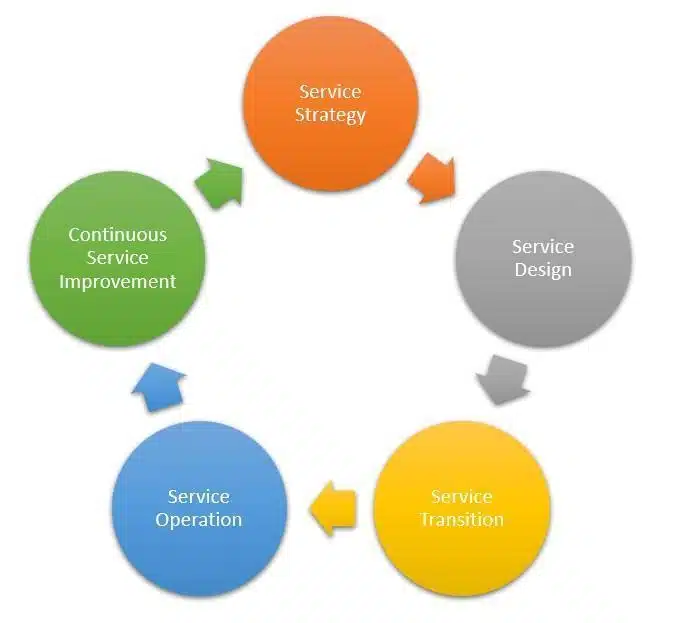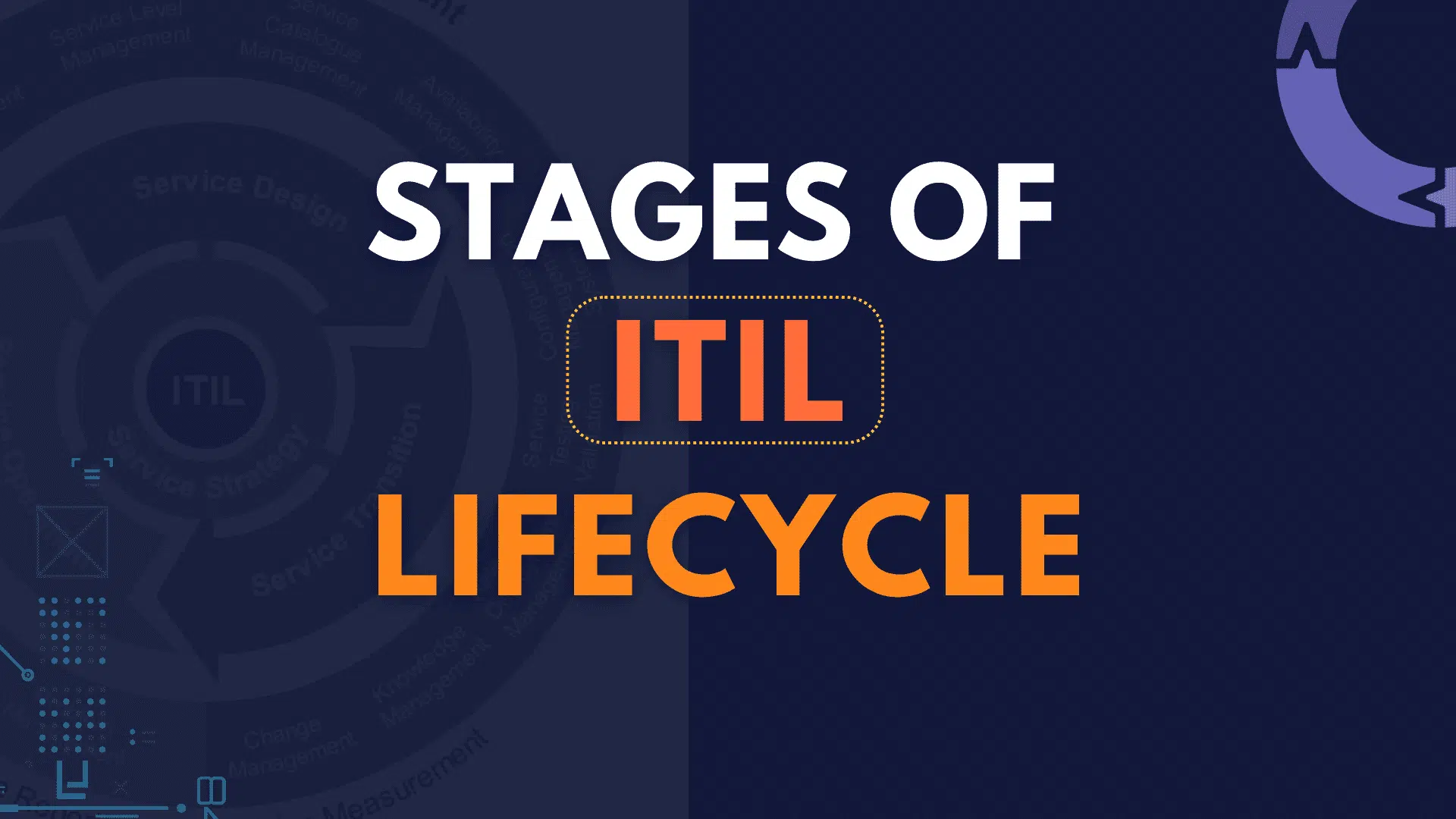ITIL stands for Information Technology Infrastructure Library and refers to a collection of procedures that helps design, develop, deliver, and maintain services in the IT industry. It aims to improve efficiency and provide predictive service delivery to businesses.
The ITIL lifecycle principles help IT services function correctly.
The five stages of the ITIL lifecycle for services describe how the services are designed, developed, launched, and maintained.
IT service management, referred to as ITSM, is how IT teams handle the end-to-end delivery of IT services to customers. It includes processes and activities to design, create, deliver, and support IT services. By aligning IT processes and services with business objectives, ITSM provides an organization with growth opportunities.
Five Stages of an ITIL Lifecycle for Services

The ITIL version 3 was launched in 2007, and it condensed all 26 processes of ITIL into five volumes. These five books are now known as the five stages of the ITIL Lifecycle for Services.
The five stages are:
- ITIL Service Strategy
- ITIL Service Design (Design Strategy)
- ITIL Service Transition (Transition Strategy)
- ITIL Service Operation (Operation Strategy)
- ITIL Continual Service Improvement
The ITIL lifecycle is built around a service strategy. The remaining stages offer a logical progression from a concept to service availability to customers.
Let’s look at the five stages of an ITIL lifecycle for services.
1st ITIL Lifecycle Stage: Service Strategy
Service Strategy is the first phase of the ITIL lifecycle. The ITIL lifecycle for services is built around the service strategy stage. A service provider needs a consistent service plan to continually improve its services.
The service strategy helps providers determine what type of service they should offer, whether there is a market for the selected service, and if they are technically qualified to fulfill requirements.
This stage aims to provide a strategic decision that can help the service provider grow in the long term. It includes guidance to design, develop, and implement the Service Management.
The service strategy stage provides guidelines to support the other four stages of the ITIL Service Lifecycle.
2nd ITIL Lifecycle Stage: Service Design Strategy
The service design process guides the design and implementation of new IT processes and services and prepares them for a live environment.
This is the most innovative phase of the ITIL lifecycle. Here, the service provider creates services to satisfy clients. Success in this stage depends on attention to detail and forethought.
It is necessary to select team members with the right skills and mindset to develop the service design strategy.
3rd ITIL Lifecycle Stage: Service Transition Strategy
Services and procedures developed in the service design stage are applied to a live environment during this stage.
Part of this phase involves setting up a testing environment. After this stage, businesses give clients early access to validate the services. It is vital to test each potential outcome in the real-world environment to avoid issues at later stages.
Finally, the complete system is thoroughly tested to ensure the client receives a stable system with no bugs.
4th ITIL Lifecycle Stage: Service Operation Strategy
Here, the service provider manages the services and maintains the processes in a live environment for customers to use.
The service provider ensures customer satisfaction, and all issues are reported, documented, and solved. Service-level agreements guarantee that the service provider will provide the services as agreed in the contract.
5th ITIL Lifecycle Stage: Continuous Service Improvement Strategy
The service owner must ensure that the service conforms to the strategic goals of the specific IT service and that key performance indicators are in place to assess the service quality. New goals should be defined when expectations and targets have been fulfilled, and service management should work to achieve those new goals.
In the continuous service improvement lifecycle, ongoing services and procedures are improved.
When each stage of the ITIL lifecycle for IT services is managed successfully, the service provider can be confident that its services will be in accordance with its business plan.
The ongoing nature of the ITIL lifecycle’s continuous service improvement stage ensures that any performance improvements that may be made will be made. Further, it ensures that the service will develop over time into one that increases profitability.
The continuous service improvement stage encompasses each level in the ITIL lifecycle model. It should be undertaken at all stages of service lifecycle management, not just after the Service Operation stage.
Summary
The five stages of the ITIL lifecycle for services provide guidance to design, develop, and manage the services for IT functions. It helps improve efficiency, makes the client happy, and helps both the service provider and the business receiving the service to grow.

I am Mohammad Fahad Usmani, B.E. PMP, PMI-RMP. I have been blogging on project management topics since 2011. To date, thousands of professionals have passed the PMP exam using my resources.







